Sokcho travel - South Korea, Asia
Sokcho is situated on the northeastern coast, along the East Sea, approximately 215 kilometers east of Seoul. Originally a fishing village, later became a mineral transfer port in 1937, and changed hands from North to South Korea in 1951. It is surrounded by the Seoraksan National Park, one of the most beautiful mountain ranges in the country. The city is located about 215 km east of Seoul and is easily accessible by road and bus. Sokcho is known for its seafood and fishing industry, with many restaurants and markets offering fresh local catches. The city also hosts several festivals throughout the year, including the Sokcho Sea Festival in August, which celebrates the city's maritime heritage with music, food, and cultural performances.
Embark on a journey beyond the ordinary—discover our premium South Korea tours here for a truly unique travel experience.
Population: approximately 83,000 as of 2024.
Economy: Sokcho is a major tourist hub, primarily due to its proximity to Seoraksan National Park, which attracts hikers and nature enthusiasts. The city's tourism industry has flourished, particularly after improvements in transportation, such as the opening of the Donghae Expressway, making it more accessible from Seoul. Visitors can expect a wide range of accommodations, restaurants, and activities that cater to tourists.
Landmarks: Seoraksan National Park, Sokcho Beach, Abai Village,Sinheungsa Temple, Sokcho Expo Tower, Yeonggeumjeong Pavilion, Daepo Port
South Korea
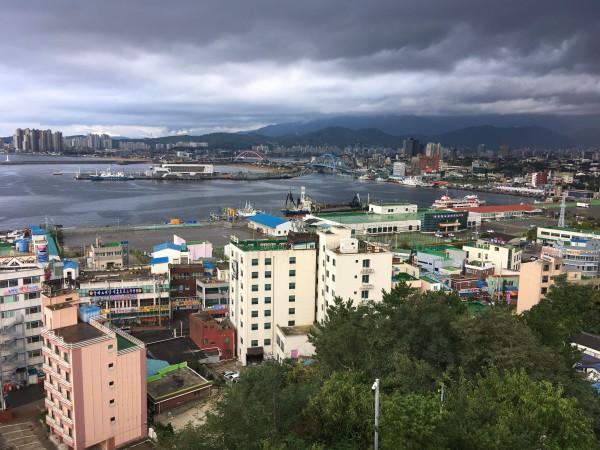
Overview of Sokcho
History & Culture Influence
Sokcho began as a humble fishing village, with its economy centered around fishing and agriculture. The city's strategic location near the border with North Korea also made it an area of military importance.
After the Korean War, Sokcho became a sanctuary for many refugees from North Korea. This influx of people from diverse backgrounds influenced the city's culture and economy.
The designation of Seoraksan National Park in 1970 marked a turning point in Sokcho's history. The park's stunning natural beauty and hiking trails quickly made it a major tourist attraction, transforming Sokcho into a thriving tourist hub. Sokcho's history has shaped its character as a resilient and adaptive city. Despite its turbulent past, including occupations and the influx of refugees, Sokcho has managed to thrive by embracing its natural beauty and cultural heritage.
Interaction with The Locals
Locals in Sokcho are generally friendly and open to tourists. They take pride in their city and are often eager to share its history, culture, and culinary delights with visitors. Visitors can expect to engage in cultural exchanges, especially during local festivals such as the Sokcho International Seafood Festival and the Seorak Cultural Festival. These events provide opportunities to mingle with residents, enjoy live performances, and sample regional cuisine. Locals are often enthusiastic about sharing their favorite dining spots, particularly for seafood dishes like Abai sundae and fresh fish. Engaging with them about local food can lead to delightful discoveries.
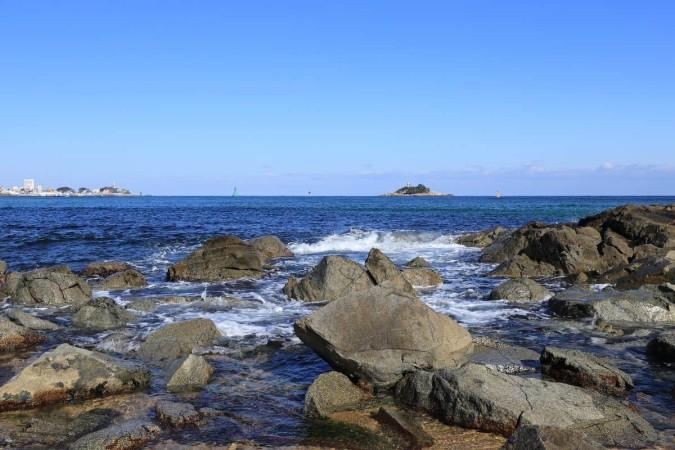
Sokcho East Sea coastline - © gather
Top attractions in Sokcho
A vibrant tourist hub known for its stunning natural landscapes and rich cultural heritage. Visitors can explore Sokcho for its breathtaking hiking trails and diverse flora and fauna, as well as Sokcho Beach, which offers beautiful sandy shores and water sports. Making Sokcho a must-visit destination for nature lovers and cultural enthusiasts alike.
Seoraksan National Park
Location: Gangwon-do, Sokcho-si, Seoraksan-ro, 833 KR
Seoraksan National Park is a must-visit for nature lovers, famous for its awe-inspiring mountain landscapes, rich biodiversity, and numerous hiking trails. Visitors can explore dramatic peaks, cascading waterfalls, and vibrant autumn foliage. The park is also home to ancient temples and scenic vistas, making it a perfect destination for both adventurers and those seeking tranquility.
Sinheungsa Temple
Location: Within Seoraksan National Park, approximately 10 km from Sokcho
Nestled within Seoraksan National Park, Sinheungsa Temple is a serene Buddhist site, renowned for its enormous bronze Buddha statue. As a starting point for many popular hiking trails, the temple offers visitors a peaceful retreat amidst nature. Its centuries-old history and spiritual atmosphere make it an essential stop for those exploring the park.
Sokcho Beach
Location: 2 km from downtown Sokcho
Sokcho Beach is a popular coastal destination known for its soft sand and crystal-clear waters, perfect for swimming and relaxing. Framed by the nearby mountains, the beach provides a stunning backdrop for sunbathing, water sports, or simply taking in the views. It’s a favorite spot for both locals and tourists.
Abai Village
Location: Approximately 700 meters from downtown Sokcho
Abai Village offers visitors a step back in time, with its traditional architecture and rich history rooted in North Korean refugee culture. The village is famous for its local delicacies, such as squid sundae, and provides an authentic glimpse into the region's past. Strolling through the village, visitors can explore its unique cultural heritage.
Sokcho Jungang Market
Location: Located in the city center of Sokcho
Sokcho Jungang Market is the bustling epicenter of the city’s culinary scene. Visitors can indulge in fresh seafood, local street food, and traditional Korean dishes. It’s the perfect place to soak up the local culture, meet friendly vendors, and taste Sokcho’s famous fried shrimp and crab.
Younggeumjeong Pavilion
Location: Near Sokcho Beach
Perched on a rocky outcrop with breathtaking views of the ocean, Younggeumjeong Pavilion is an ideal spot for watching the sunrise or sunset. The pavilion is connected to Sokcho Beach by a picturesque walkway, making it a favorite for photographers and those looking for a peaceful moment by the sea.
Sokcho Expo Tower
Location: 72 Expo-ro, Sokcho-si, Gangwon-do
For panoramic views of Sokcho and its stunning coastal landscape, the Sokcho Expo Tower is the place to visit. With observation decks offering 360-degree views, it’s a popular spot for capturing the beauty of the area. The tower is also a great location for photography and appreciating the city's natural charm.
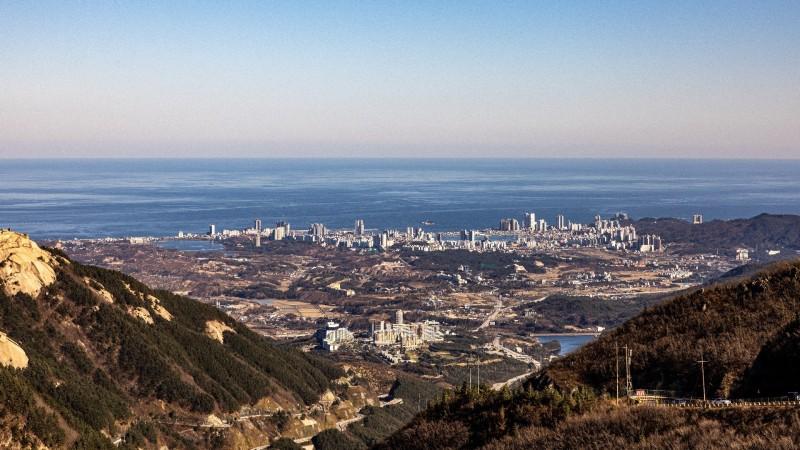
Sokcho city scape - © gather
Must-Try Dishes in Sokcho
Famous for its fresh seafood and distinctive local flavors. you can indulge in the freshest seafood and experience the unique flavors that define this coastal city. From succulent grilled fish straight from the East Sea to hearty seafood stews, Sokcho's cuisine offers an authentic taste of the region's maritime heritage. These delicious local dishes are a perfect way to savor the city’s rich culinary traditions.
Abai Soondae (아바이순대)
Abai Soondae is a distinctive type of Korean blood sausage, stuffed with glutinous rice, pig's liver, and various vegetables, giving it a rich, hearty flavor. Traditionally served with seasoned pollack and perilla leaves kimchi, this dish has roots in the North Korean refugee community of Abai Village, making it not only a culinary delight but also a symbol of the region's history and cultural resilience.
Intrigued by Suwon? See why it’s a favourite among visitors, and start planning your trip here with our exclusive guide.
Ojingeo Soondae (오징어순대)
Ojingeo Soondae takes the classic soondae concept and gives it a seafood twist by stuffing squid with glutinous rice and flavorful fillings. This dish beautifully reflects Sokcho’s coastal location, offering a unique blend of textures and tastes that highlights the area's fresh seafood tradition. It's a must-try for adventurous food lovers.
Sokcho Jeotgal (속초젓갈)
Jeotgal is a variety of fermented seafood dishes, made from salted fish and seafood like shrimp, squid, or clams. Known for its bold, briny flavors, Jeotgal is a staple side dish in Sokcho, often enjoyed with rice or as part of a larger meal. The freshness and distinct taste of Sokcho's Jeotgal make it a popular item at local markets like the Sokcho Fish Market.
Dakgangjeong (닭강정)
Dakgangjeong is crispy fried chicken coated in a sticky sweet and spicy glaze. This addictive dish is a crowd favorite, especially at markets like Sokcho Jungang Market. Its perfect balance of crunch and flavor reflects South Korea’s love for fried chicken, and in Sokcho, it’s often enjoyed as a savory snack or shared as a tasty appetizer.
Kamja Ongsimi (감자옹심이)
Kamja Ongsimi is a comforting potato dumpling soup made with grated potatoes, formed into soft dumplings and simmered in a clear, flavorful broth. Hearty and warming, especially during cold winter months, this dish is a local favorite that showcases the agricultural richness of the Sokcho region.
Innovative Hotteok (호떡)
Hotteok, a popular Korean street food, gets a fun and creative makeover in Sokcho with unique toppings like Oreo crumbs or cheese. These variations offer a delightful twist on the traditional sweet pancake, making it an exciting treat for visitors. It’s a great example of Sokcho's innovative approach to classic flavors, making it a memorable snack for any food enthusiast.
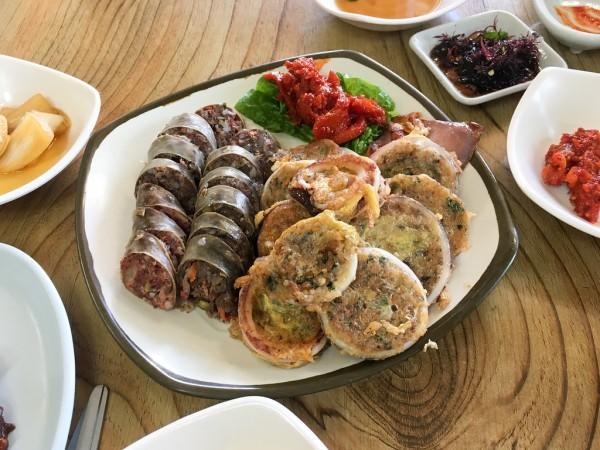
Abai Soondae - © gather
Sokcho's weather and climate
Sokcho experiences a temperate climate characterized by distinct seasons, making it an appealing destination year-round.
Average Temperatures
Winter (December to February): Average temperatures range from -4°C to 4°C (24°F to 39°F), with January being the coldest month.
Spring (March to May): Temperatures gradually increase, averaging between 6°C and 21°C (43°F to 70°F), making it a pleasant time to visit.
Summer (June to August): The warmest months, with average temperatures from 20°C to 28°C (68°F to 82°F), and July and August seeing the highest humidity and rainfall.
Autumn (September to November): Cooler temperatures return, averaging between 11°C and 24°C (52°F to 75°F).
Rainfall
Annual Rainfall: Sokcho receives significant precipitation, particularly in the summer months, with July and August being the wettest, averaging around 304 mm (12 inches) and 216 mm (8.5 inches) of rainfall, respectively. December is typically the driest month.
Best Time to Travel
Spring (April to June) and Autumn (September to November) are considered the best times to visit, offering mild temperatures and lower humidity, ideal for outdoor activities and sightseeing.
Want to know what makes Busan unique? Look no further—find everything you need here in our travel insights.

Sokcho Light Festival Cheongcho Hwanhee - © gather
Festivals & Local Celebrations
Sokcho Seafood Festival
Time of Year: Held annually in August
The Sokcho Seafood Festival is a vibrant celebration of the city's rich maritime heritage, offering visitors the chance to indulge in a variety of fresh seafood dishes. From live cooking demonstrations to seafood-eating contests, the festival is a haven for food lovers. Beyond the culinary delights, the event features live music, cultural exhibits, and fireworks displays, adding excitement to the experience. The parade, which highlights Sokcho’s proud fishing traditions, provides a deeper glimpse into the local way of life.
Seorak Cultural Festival
Time of Year: Typically held in October
This festival showcases the cultural richness of the Seorak region, offering visitors a mix of traditional performances, art exhibitions, and craft demonstrations. It's an immersive experience where you can try your hand at local crafts like pottery or weaving through interactive workshops. The festival also includes a food fair where you can taste regional specialties and fresh local produce, making it a perfect event for those interested in both culture and cuisine.
Sokcho Light Festival Cheongcho Hwanhee
Time of Year: Held annually in December
The Sokcho Light Festival turns the city into a winter wonderland, with dazzling light displays along the scenic Cheongcho Stream. Illuminated sculptures, interactive installations, and twinkling pathways create a magical atmosphere. Visitors can stroll through the sparkling streets, enjoy live music, fireworks, and warm up with hot drinks and local street food, making it a festive and unforgettable winter event.
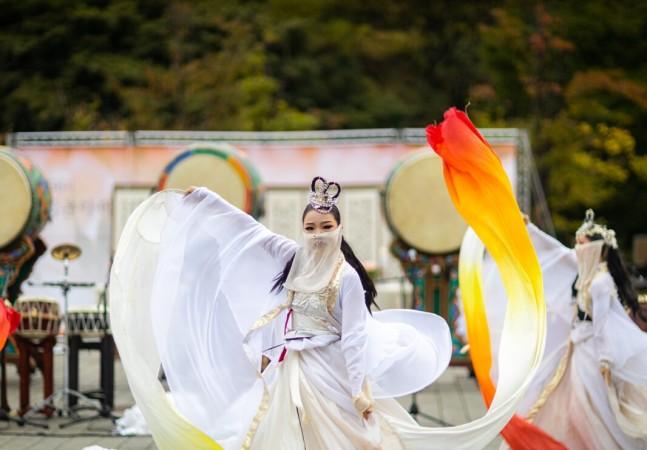
Seorak Cultural Festival - © gather
What to Do in Sokcho
Hiking in Seoraksan National Park
Explore the breathtaking landscapes of Seoraksan National Park, famous for its dramatic peaks, lush forests, and diverse wildlife. There are various hiking trails suitable for all skill levels, including the popular trail to Gwongeumseong Fortress, which offers stunning panoramic views.
Visit Sinheungsa Temple
Located within Seoraksan National Park, Sinheungsa Temple is a serene Buddhist temple known for its giant bronze Buddha statue. Visitors can enjoy the peaceful atmosphere and explore the temple grounds while taking in the surrounding natural beauty.
Relax at Sokcho Beach
Spend a day at Sokcho Beach, where visitors can swim, sunbathe, and enjoy water sports. The beach is well-equipped with facilities and offers beautiful views of the mountains, making it a perfect spot for relaxation and leisure activities.
Experience Sokcho Jungang Market
Explore Sokcho Jungang Market, known for its vibrant atmosphere and delicious local food. Visitors can sample fresh seafood, local snacks, and traditional Korean dishes while immersing themselves in the daily life of the community.
Enjoy the Views from Younggeumjeong Pavilion
Visit Younggeumjeong Pavilion, located on a rocky outcrop overlooking the sea. This scenic spot is perfect for photography and relaxation, especially during sunrise and sunset, offering stunning views of the coastline and surrounding landscape.
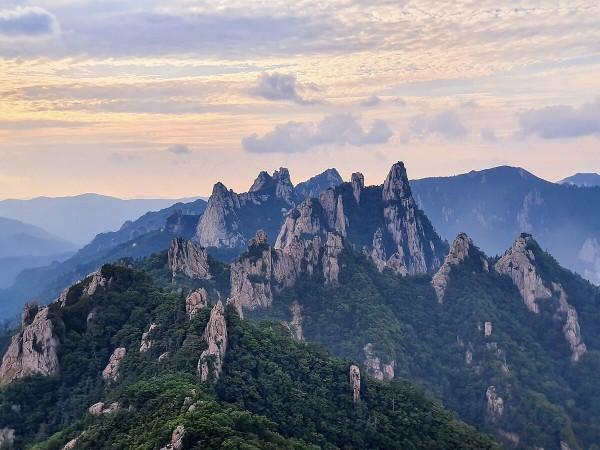
Seoraksan mountain peaks - © gather
Culture Etiquette in Sokcho
When visiting Sokcho, it's important for travelers to be aware of certain cultural etiquette and customs to ensure respectful and enjoyable interactions with locals. Here are some key points to keep in mind:
Respect for Religious Sites
When visiting Buddhist temples like Sinheungsa within Seoraksan National Park, dress modestly and remove shoes before entering certain areas. Maintain a quiet and respectful demeanor, especially in prayer halls and meditation spaces.
Greetings and Interactions
A slight bow or a polite greeting in Korean, such as "Annyeonghaseyo" (Hello), is appreciated. Showing respect to elders is important in Korean culture.
Avoid public displays of affection, as they are generally frowned upon. Keep interactions with locals professional and friendly.
Dining Etiquette
When dining with locals, wait for the eldest person to start eating before you begin. Use both hands when passing or receiving items, especially drinks. Avoid sticking chopsticks upright in rice, as this resembles a funeral ritual.
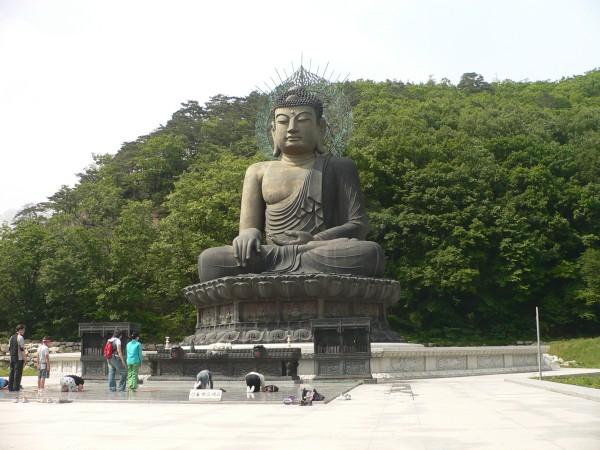
Sinheungsa Temple Buddha statue - © gather
Essential Travel Information
Transportation
Getting to and around Sokcho is relatively straightforward, with several transportation options available for visitors. Here's an overview of airport transfers, public transit, taxis, and ride-sharing services.
Airport Transfers
- From Incheon International Airport (ICN): The most common way to reach Sokcho from Incheon Airport is by taking a bus or train. The journey typically involves traveling to Seoul and then transferring to a bus or train to Sokcho. The total travel time is approximately 3.5 to 4 hours, with costs ranging from $25 to $35 depending on the mode of transport.
- Direct Transfers: For a more comfortable option, visitors can book private transfers from Incheon Airport to Sokcho, which can take about 2 to 2.5 hours. This option is more expensive, generally starting around 215 EUR.
Public Transit
- Buses: Sokcho is well-connected by bus services from major cities, including Seoul and Gangneung. The Sokcho Intercity Bus Terminal offers regular services, making it easy for travelers to reach the city from surrounding areas.
- Trains: While Sokcho does not have a direct train station, visitors can take a train to the nearest station, such as Gangneung Station, and then transfer to a local bus or taxi to reach Sokcho.
Taxis
- Local Taxis: Taxis are readily available in Sokcho and are a convenient way to get around the city. They operate on a metered fare system, and the estimated fares for common destinations within the city are generally reasonable.
ATM
Availability: Sokcho has several ATMs available, including those from major banks like KB Kookmin Bank and Shinhan Bank. These ATMs provide convenient access to cash and often support international cards, making it easy for travelers to withdraw money.
Banking Facilities: Many hotels, such as the Ocean to You Resort Sokcho Seorak Beach Hotel and Condo, offer ATM services on-site, allowing guests to access banking services without leaving the premises. Additionally, local banks provide standard banking services during regular business hours.
Accommodation Choices
Ocean to You Resort Sokcho Seorak Beach Hotel and Condo
This resort offers comfortable accommodations with modern amenities, including a 24-hour front desk, luggage storage, and ATM/banking services. It is conveniently located near major attractions, making it a great base for exploring Sokcho.
Sokcho Beach Hotel
A beachfront hotel offering rooms with stunning views of the East Sea. It provides easy access to Sokcho Beach and is within walking distance of various restaurants and shops.
Seorak Waterpia Resort
This resort features a water park with various pools and slides, making it an ideal choice for families. It offers comfortable accommodations and is situated near Seoraksan National Park.
Hanwha Resort Sokcho
A luxury resort with well-appointed rooms, multiple dining options, and recreational facilities such as a golf course and spa. It is located in a scenic area near Seoraksan National Park.
Articles for you
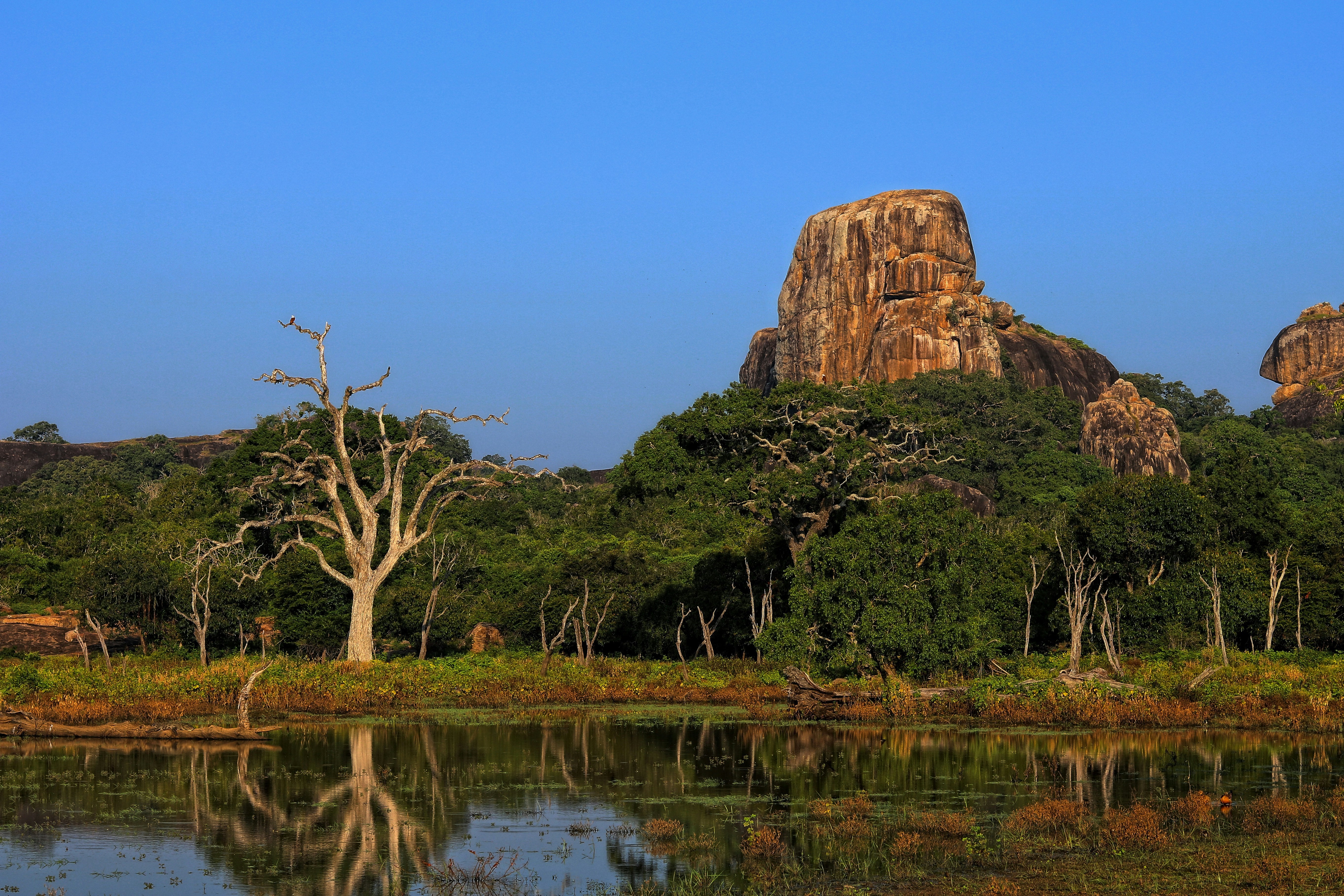
Explore Yala National Park - Sri Lanka Travel, Asia
Tucked away in Sri Lanka’s southeastern corner, Yala National Park is where wild nature meets deep tradition. Known worldwide for its leopard population, the park is also home to elephants, sloth bears, crocodiles, and hundreds of bird species. Beyond wildlife, Yala opens doors to a cultural landscape dotted with ancient temples, Buddhist ruins, and coastal villages. For travelers seeking more than just a safari, Yala offers a chance to explore eco-tourism, local communities, and sacred heritage sites.
Population: The Yala National Park area doesn’t have a human population.
Economy: The economy around Yala National Park thrives on a blend of eco-tourism, agriculture, and local services. Safari tours, eco-lodges, and cultural experiences drive steady income for nearby towns like Tissamaharama and Kataragama, supporting thousands of families.
Landmarks: Famous for Block I of Yala and wildlife encounters, including elephants, sloth bears, crocodiles, and exotic bird species.
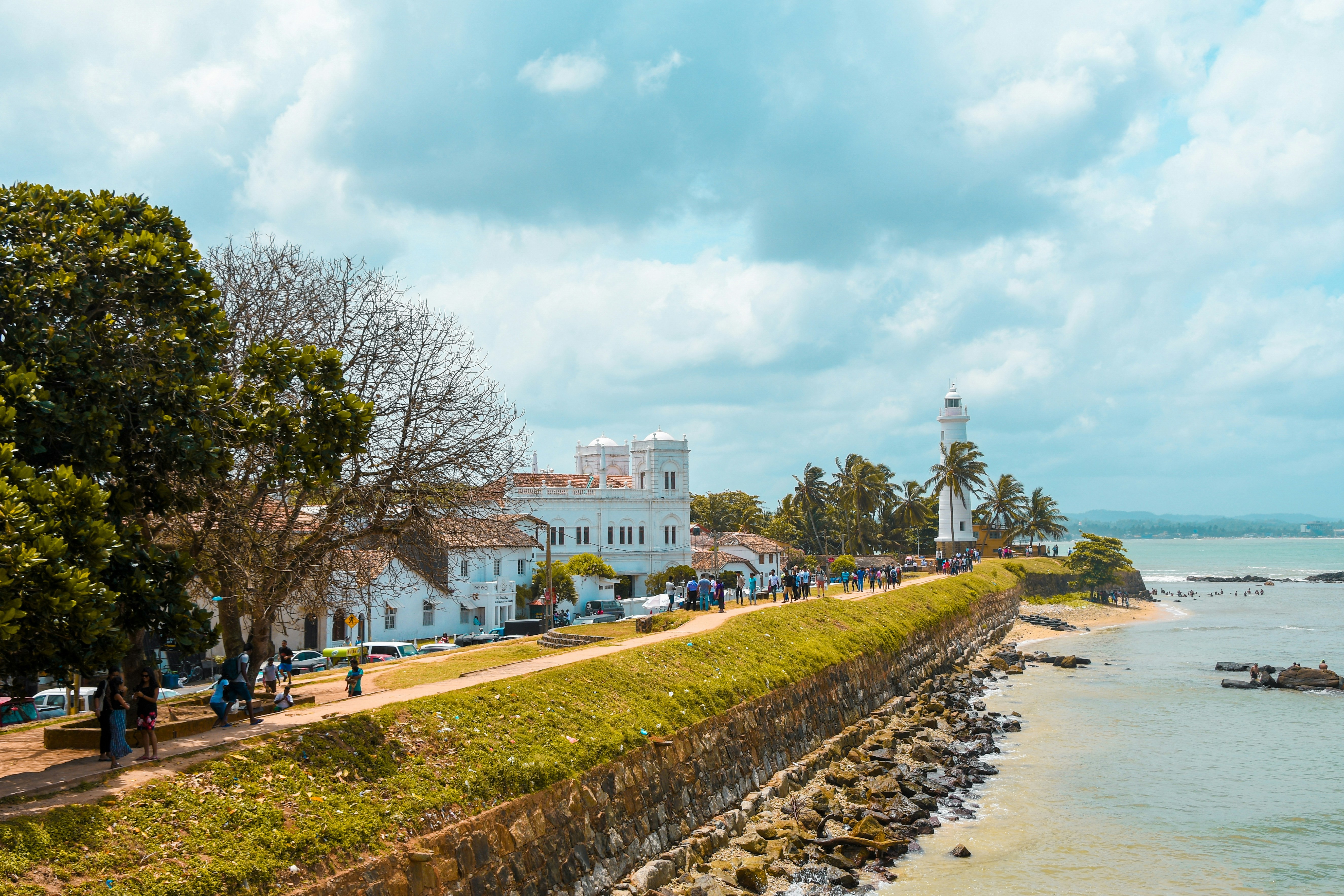
Explore Galle - Sri Lanka Travel, Asia
Nestled on Sri Lanka’s southern coastline, Galle is a vibrant city where history meets the sea. Its cobbled streets, colonial architecture, and serene beaches make it a must-visit destination for travelers seeking a blend of culture, adventure, and relaxation. A UNESCO World Heritage site, Galle captivates visitors with its Dutch Fort, bustling markets, and friendly locals. Whether you’re exploring the ramparts at sunset or savoring fresh seafood by the shore, Galle promises an unforgettable journey into Sri Lanka’s heritage.
Population: Approximately 113,000 in 2023.
Economy: Galle’s economy thrives on tourism, trade, and fisheries. The city’s historic fort, colonial architecture, and coastal charm draw thousands of international visitors each year, making tourism its main economic driver. Fishing remains vital for local livelihoods, supplying fresh seafood across the region.
Landmarks: Famous for the Galle Fort, Dutch Reformed Church & Maritime Museum, and Unawatuna Beach.
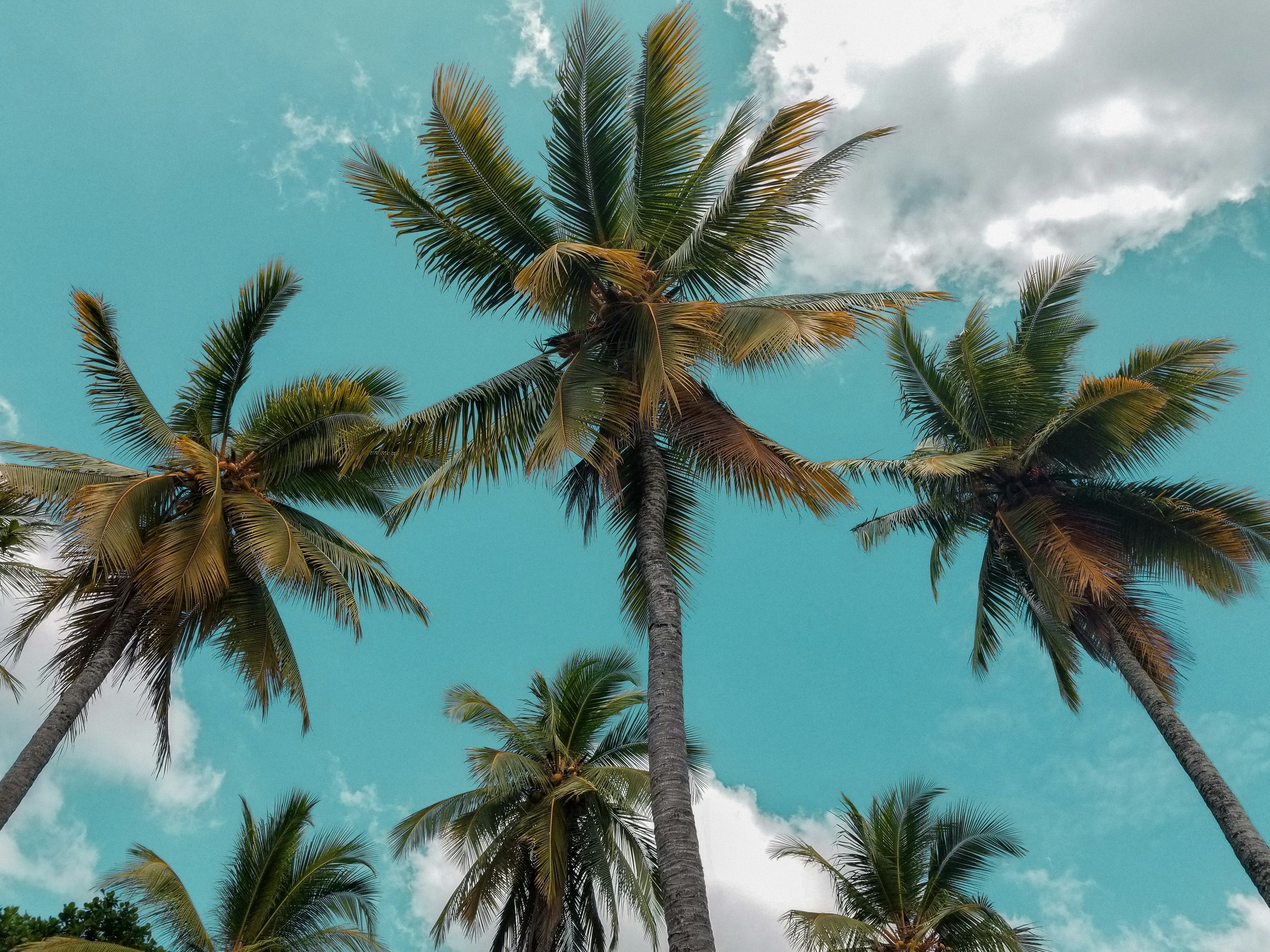
Explore Bentota - Sri Lanka Travel, Asia
Nestled along Sri Lanka’s southwestern coast, Bentota is a tropical paradise that blends golden beaches, vibrant culture, and thrilling adventures. Famous for its calm waters, luxury resorts, and scenic river estuary, Bentota has become a top destination for travelers seeking both relaxation and authentic experiences. From serene beach walks at sunrise to adrenaline-pumping water sports, this coastal town offers a perfect balance of leisure and exploration. With its proximity to Colombo and Galle, Bentota is easy to reach, making it an ideal stop for both short escapes and extended holidays.
Population: Approximately 37,000 in 2023.
Economy: Bentota’s economy thrives mainly on tourism, which drives local businesses such as hotels, restaurants, and wellness retreats. The town also benefits from fishing, coconut cultivation, and handicrafts like wood carving and batik textiles. Many residents rely on the growing demand for water sports and Ayurvedic treatments, making tourism the backbone of both income and employment in the area.
Landmarks: Famous for Bentota Beach, Bentota River Safari, and Kande Vihara Temple.
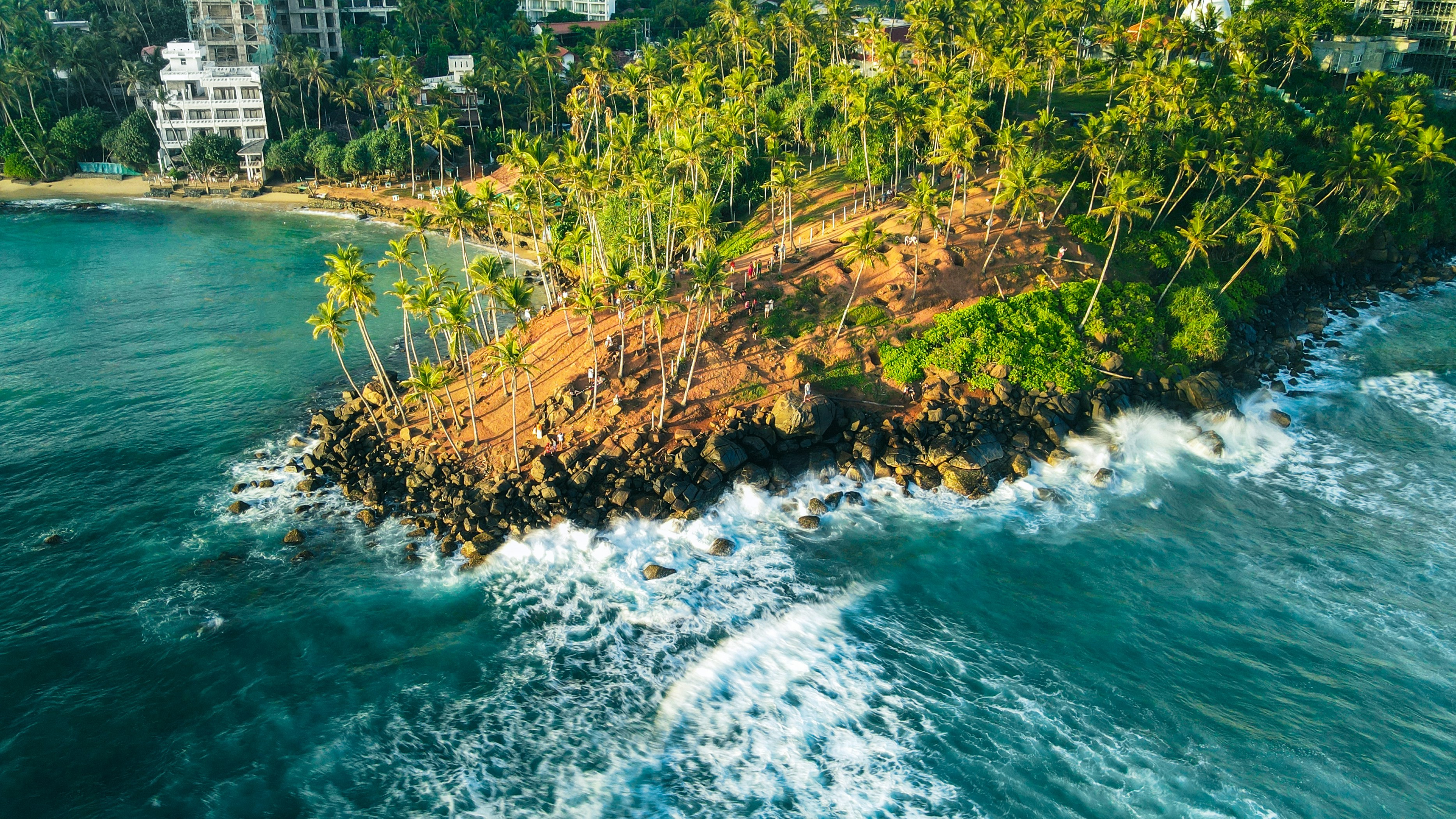
Explore Mirissa - Sri Lanka Travel, Asia
Mirissa is a charming coastal town on Sri Lanka’s southern shoreline. Known for its golden beaches, turquoise waters, and vibrant marine life, it has become a must-visit stop for travelers exploring the island. Many come for whale watching, surfing, and sunset views at Coconut Tree Hill, but Mirissa offers much more than postcard beauty. The fishing boats you see anchored by the bay carry generations of stories. Local traditions, delicious cuisine, and a laid-back rhythm of life shape every visitor’s experience.
Population: Approximately 4,700 in 2023.
Economy: Mirissa’s economy is largely shaped by its coastal location. Fishing has long been the backbone of local livelihoods, with generations relying on the Indian Ocean for income. In recent decades, tourism has become the main driver of growth, thanks to whale watching, surfing, and beachside hospitality.
Landmarks: Famous for Mirissa Beach, Coconut Tree Hill, and Parrot Rock Bridge.
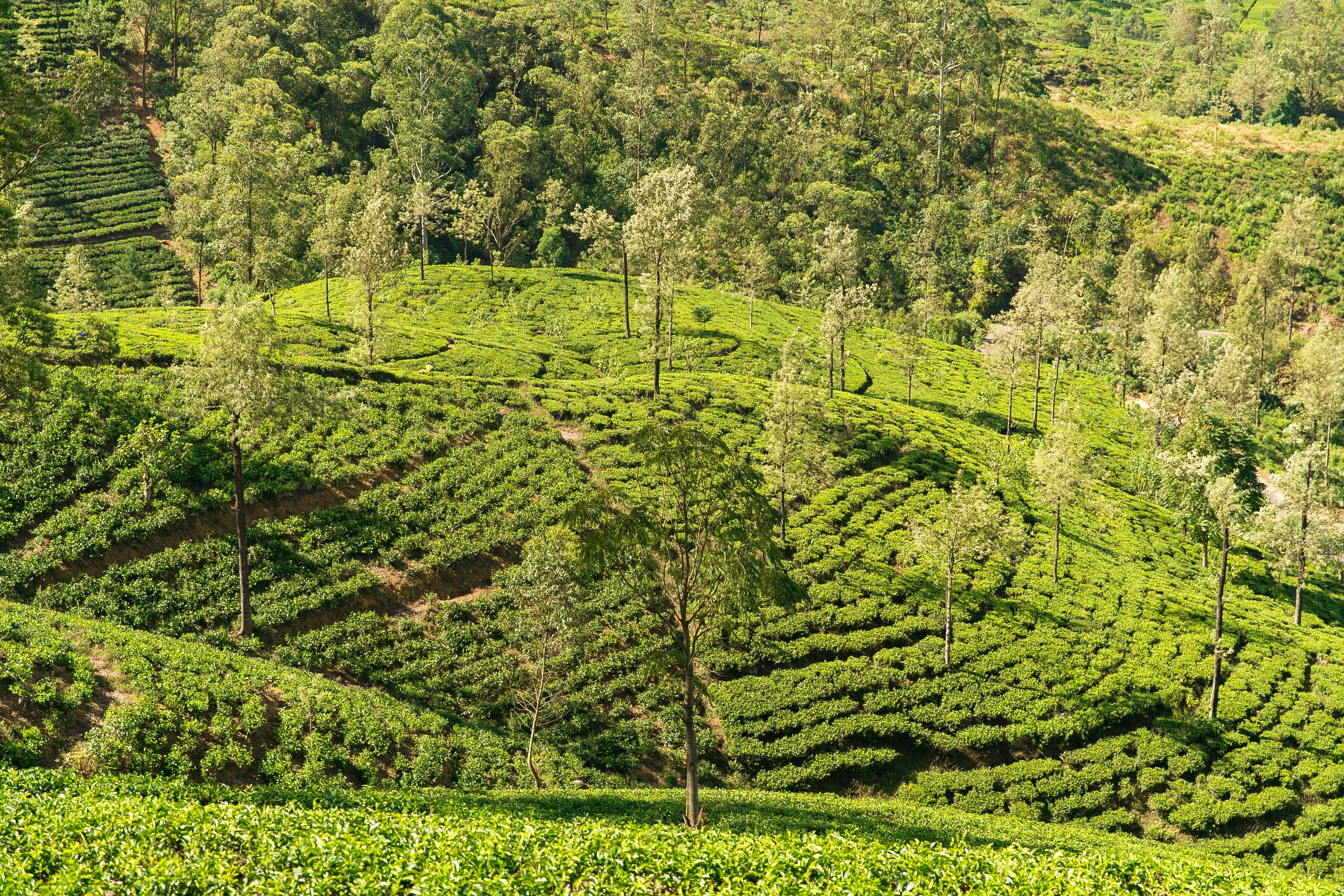
Explore Nuwara Eliya - Sri Lanka Travel, Asia
Tucked away in the Central Highlands of Sri Lanka, Nuwara Eliya is often called “Little England”. With its rolling tea plantations, cool misty mornings, and colonial charm, this mountain town feels like a step into another world. Travelers come here to breathe fresh air, walk through flower gardens, sip the finest Ceylon Tea, and enjoy a pace of life far from the island’s busy cities. Whether you’re drawn by scenic landscapes, heritage architecture, or the warmth of its people, Nuwara Eliya is a destination that blends nature, culture, and history in perfect harmony.
Population: Approximately 781,000 in 2023.
Economy: Nuwara Eliya’s economy thrives mainly on tea production, as it sits in the heart of Sri Lanka’s central highlands, famous worldwide for Ceylon Tea. The city also benefits from a growing tourism industry, attracting visitors with its colonial charm, cool climate, and scenic landscapes.
Landmarks: Famous for Gregory Lake, Hakgala Botanical Garden, and Victoria Park.
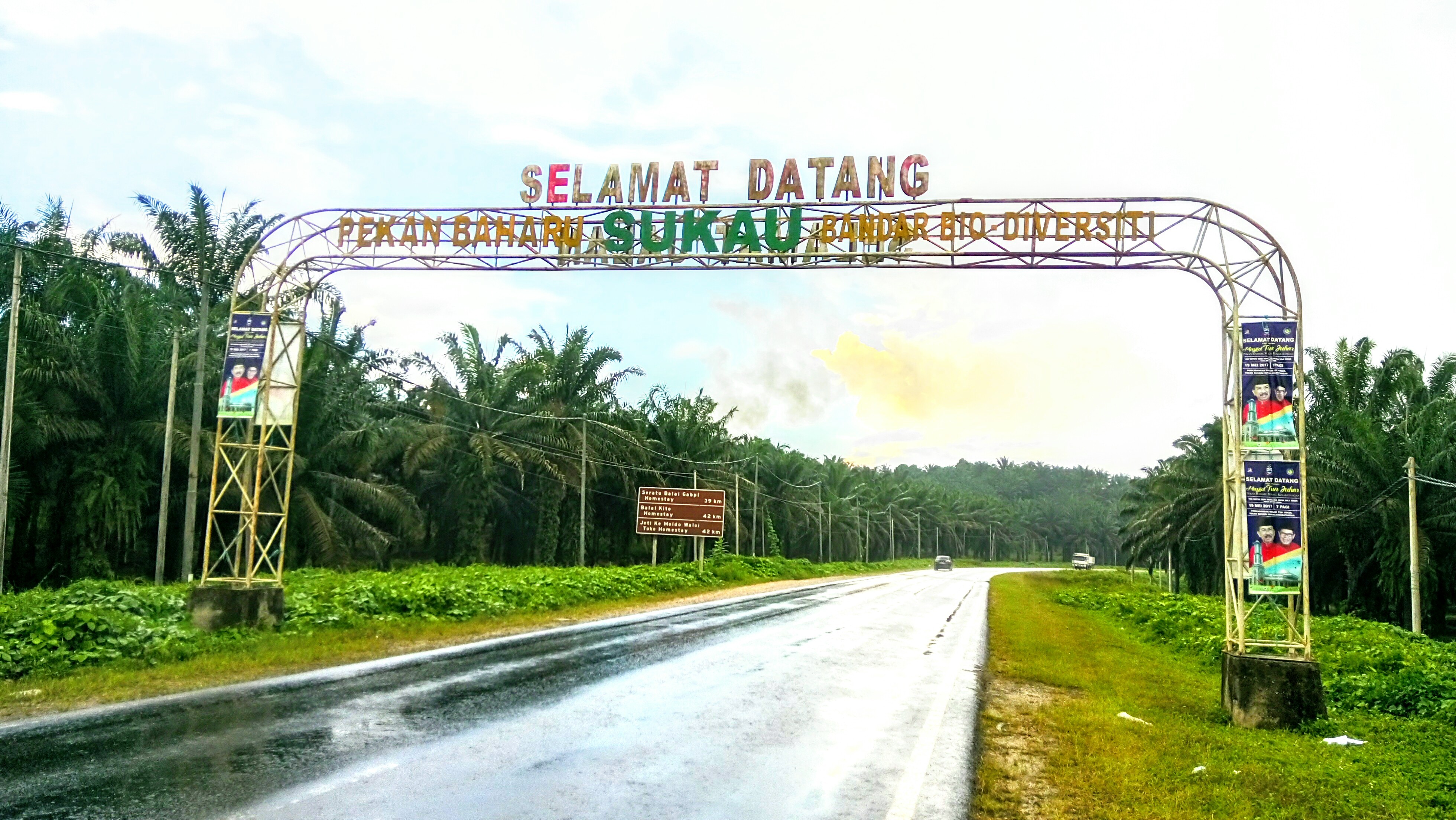
Explore Sukau - Malaysia Travel, Asia
Nestled on the banks of the Kinabatangan River in Sabah, Malaysian Borneo, Sukau is a destination where wildlife, culture, and conservation come together. Known as one of Asia’s top spots for river safaris and eco-tourism, this quiet village offers a front-row seat to encounters with Bornean orangutans, pygmy elephants, proboscis monkeys, and exotic birdlife.
Population: Approximately 1,400 in 2019.
Economy: Sukau’s economy is shaped by its riverine location and natural resources. Traditionally, the Orang Sungai community relied on fishing, small-scale farming, and forest gathering for their livelihood. Today, the village has shifted toward eco-tourism, with river cruises, jungle trekking, and homestays providing income.
Landmarks: Famous for the Kinabatangan River cruises, Gomantong Caves, and Ox-bow lakes and wetlands.
